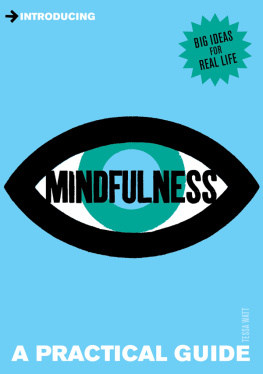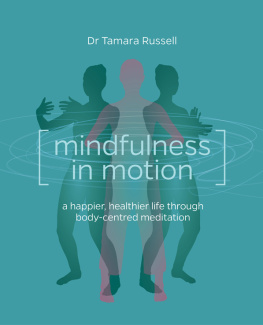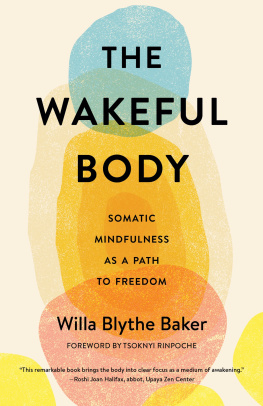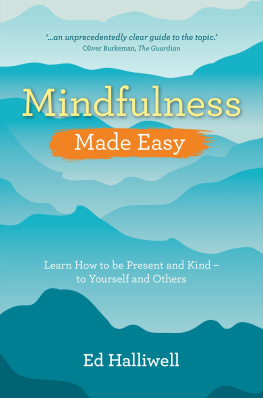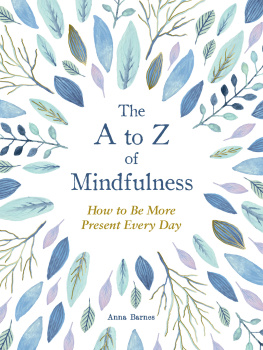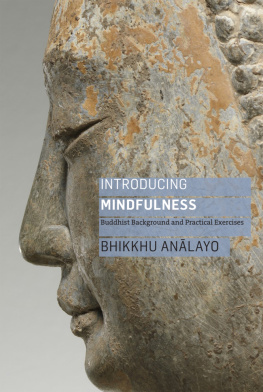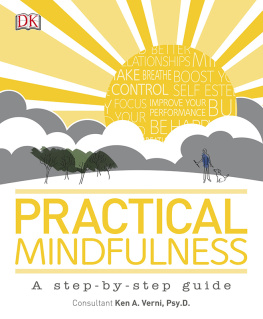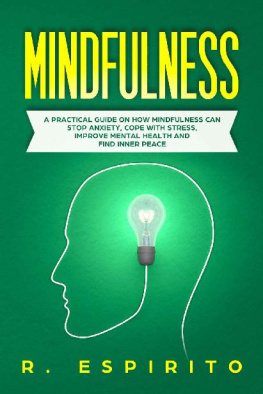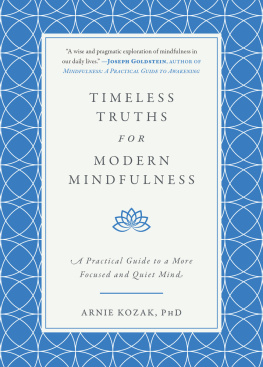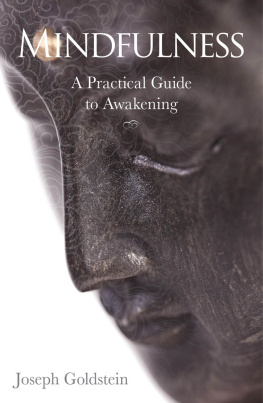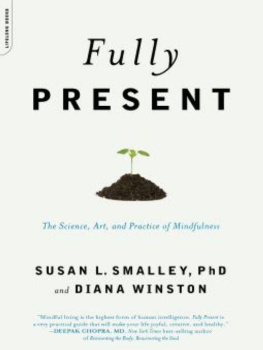Tessa Watt - Introducing Mindfulness: A Practical Guide
Here you can read online Tessa Watt - Introducing Mindfulness: A Practical Guide full text of the book (entire story) in english for free. Download pdf and epub, get meaning, cover and reviews about this ebook. year: 2012, publisher: Icon Books, genre: Religion. Description of the work, (preface) as well as reviews are available. Best literature library LitArk.com created for fans of good reading and offers a wide selection of genres:
Romance novel
Science fiction
Adventure
Detective
Science
History
Home and family
Prose
Art
Politics
Computer
Non-fiction
Religion
Business
Children
Humor
Choose a favorite category and find really read worthwhile books. Enjoy immersion in the world of imagination, feel the emotions of the characters or learn something new for yourself, make an fascinating discovery.
- Book:Introducing Mindfulness: A Practical Guide
- Author:
- Publisher:Icon Books
- Genre:
- Year:2012
- Rating:5 / 5
- Favourites:Add to favourites
- Your mark:
- 100
- 1
- 2
- 3
- 4
- 5
Introducing Mindfulness: A Practical Guide: summary, description and annotation
We offer to read an annotation, description, summary or preface (depends on what the author of the book "Introducing Mindfulness: A Practical Guide" wrote himself). If you haven't found the necessary information about the book — write in the comments, we will try to find it.
Mindfulness is about teaching yourself to be more aware of your body and your environment, more present in the here and now, more focused and able to make choices about where you direct your attention, and more accepting of yourself and other people.
Introducing Mindfulness: A Practical Guide — read online for free the complete book (whole text) full work
Below is the text of the book, divided by pages. System saving the place of the last page read, allows you to conveniently read the book "Introducing Mindfulness: A Practical Guide" online for free, without having to search again every time where you left off. Put a bookmark, and you can go to the page where you finished reading at any time.
Font size:
Interval:
Bookmark:
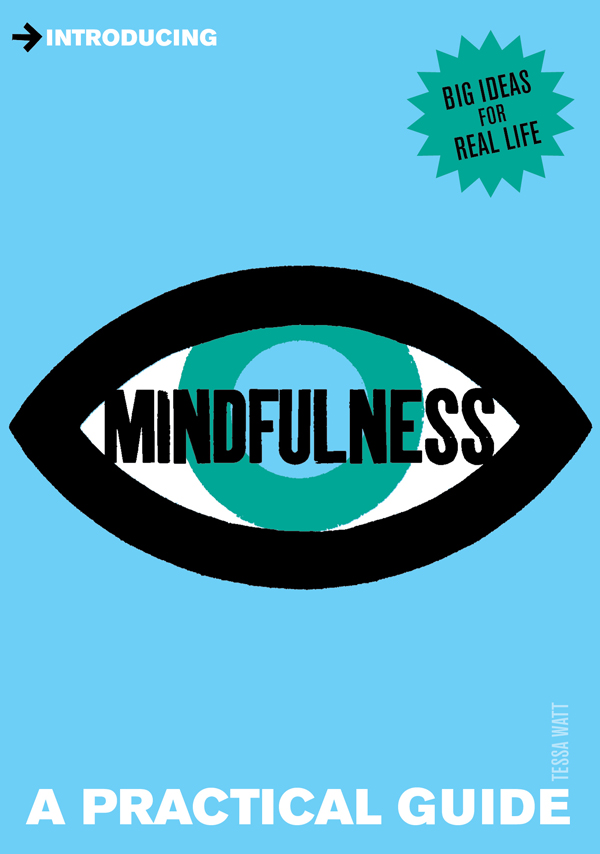
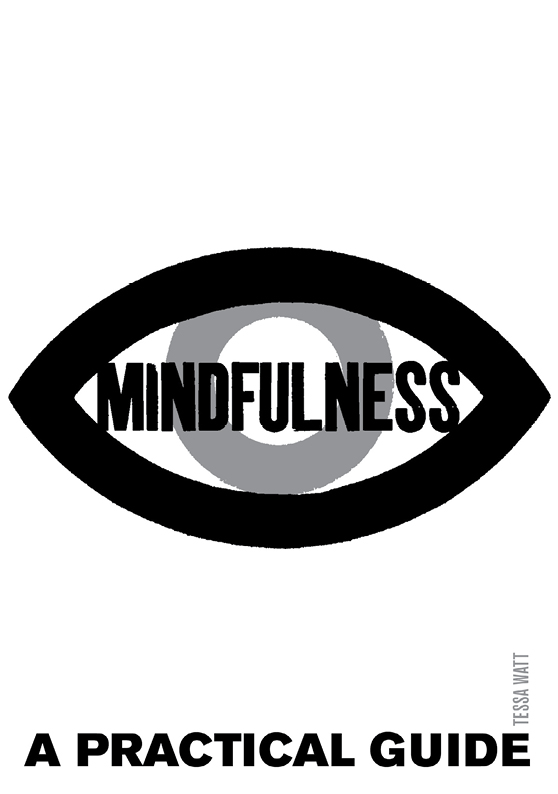
First published in the UK in 2012 by Icon Books Ltd, Omnibus Business Centre, 3941 North Road, London N7 9DP email: www.iconbooks.co.uk This electronic edition published in the UK in 2012 by Icon Books Ltd Printed edition sold in the UK, Europe, South Africa and Asia by Faber & Faber Ltd, Bloomsbury House, 7477 Great Russell Street, London WC1B 3DA or their agents Printed edition distributed in the UK, Europe, South Africa and Asia by TBS Ltd, TBS Distribution Centre, Colchester Road, Frating Green, Colchester CO7 7DW | Printed edition published in Australia in 2012 by Allen & Unwin Pty Ltd, PO Box 8500, 83 Alexander Street, Crows Nest, NSW 2065 Printed edition distributed in Canada by Penguin Books Canada, 90 Eglinton Avenue East, Suite 700, Toronto, Ontario M4P 2Y3 Printed edition published in the USA in 2012 by Totem Books Inquiries to: Icon Books Ltd, Omnibus Business Centre, 3941 North Road, London N7 9DP, UK Printed edition distributed to the trade in the USA by Consortium Book Sales and Distribution The Keg House, 34 Thirteenth Avenue NE, Suite 101, Minneapolis, MN 55413-1007 |
ISBN: 978-184831-375-0 (ePub format) ISBN: 978-184831-376-7 (Adobe eBook format) Text copyright 2012 Tessa Watt The author has asserted her moral rights. No part of this book may be reproduced in any form, or by any means, without prior permission in writing from the publisher. Typeset in Avenir by Marie Doherty |
Tessa Watt teaches mindfulness and is co-director of Being Mindful, an organization which offers mindfulness training for the public and in workplaces. In her earlier career she was a research fellow in history at Cambridge University, and then for many years a senior producer in BBC Radio and Music.
Tessa has been practising meditation for twenty years and is an instructor at the London Shambhala Meditation Centre. She is a qualified yoga teacher, registered with the British Wheel of Yoga. She did her mindfulness teacher training with the Centre for Mindfulness Research and Practice at Bangor University. Tessa is a co-presenter of Be Mindful Online, the Mental Health Foundations online mindfulness course. She is a founding director of Slow Down London, a project encouraging city-dwellers to challenge the cult of speed and appreciate the world around them.
Its important to note that there is much frequently used teaching and research employed in mindfulness. Where I know the source I have been sure to reference it, but my apologies here to the originators of any material if I have overlooked them.
Mindfulness is one of the oldest and most basic skills known to mankind. In its essence, its as simple as rediscovering the taste of fresh water or the vastness of the sky. It is learning, or re-learning, how to be present, how to be in this moment. It can be like stepping out of a grey flat screen mode into a world which is vivid and three-dimensional.
Mindfulness means becoming more aware of whats going on right here, right now. We can appreciate our lives, instead of rushing through them, always trying to get somewhere else. Being mindful can also help us to be less swept away by our powerful, habitual currents of thought and emotion, which can manifest as stress, depression, negative thinking, anxiety, anger, resentment or self-doubt.
Mindfulness itself is a way of being a capacity for moment-by-moment awareness which doesnt belong to any one culture or tradition. But we find that this skill, part of our birthright, has somehow been lost to us; perhaps increasingly so in our speedy 21st-century world. The good news is that we can train ourselves in mindfulness, just as we exercise to keep our bodies healthy.
Mindfulness is about teaching yourself to be more:
- Aware of your body, your mind and the environment
- Present in this moment; right here, right now
- Focused more able to make choices about where you place your attention
- Embodied being in your body; bringing your mind and your body into synch
- Accepting of yourself and other people.
Mindfulness training draws on the ancient traditions of meditation and yoga, often incorporating insights from modern medicine and psychotherapy. It involves setting aside time for practice time when you can literally practise being mindful by bringing your mind back, again and again, to a particular object of attention.
In mindfulness practice you may use one or more of these as your focus:
- Your breath the physical sensations of breathing
- Your body in stillness or in movement
- Your senses such as hearing, seeing and tasting
- Your thoughts which may include your emotions
- Your experience whatever arises in your awareness in this moment, including any of the above.
As well as making space for formal meditation, you can bring mindfulness into your life throughout the day. You can use informal practices to help you do this washing the dishes mindfully, perhaps, or taking a short breathing space. With practice, the mindful approach will slowly seep into your being and you may find yourself naturally being more present and aware in your daily life.

Mindfulness practice can be:
- Formal such as sitting meditation using the breath as a focus
- Informal such as making a cup of tea with awareness.
The practice of mindfulness goes back thousands of years. Many spiritual traditions have encouraged presence in the moment as a way to be in touch with our inner selves, or the divine. Buddhism has made mindfulness a core part of its teachings, more so than any other tradition. Buddhist thinkers have taken great interest over the centuries in the way the human mind works, developing methods of training the mind to be more present, focused and aware. The practical techniques used in current mindfulness training come largely from the Buddhist tradition of meditation, along with elements drawn from the more body-oriented Indian discipline of hatha yoga.
Since the 1960s, the political situation in Asian countries like Vietnam and Tibet has sent Buddhist teachers into exile in the West, where theyve taken up the challenge of teaching new audiences. Meditation practices which were traditionally done by monks in a forest or monastery have been adapted for busy Westerners with jobs and families. Influential Buddhist teachers have included the Japanese Zen teacher Shunryu Suzuki, the Vietnamese monk Thich Nhat Hanh, the visionary Tibetan Chgyam Trungpa, and of course the well known Dalai Lama, spiritual leader of Tibet.
But you dont have to be religious, become a Buddhist or believe anything particular to practise mindfulness. Since the 1970s, mindfulness training in the West has developed into structured, secular courses which are increasingly accessible. Mindfulness has spread like wildfire in the public consciousness. In 1979 the American Jon Kabat Zinn created an eight-week course at the University of Massachusetts Medical School to help people with difficult conditions such as chronic pain, AIDS and cancer. Without being able to cure them, he discovered that meditation could help them relate to their stress and suffering in a different way. This course of Mindfulness-Based Stress Reduction (MBSR), is now used around the world; not only for people with illness, but for many thousands of participants simply wanting to find a way to deal with the normal daily difficulties of life, and to enjoy life more fully.
Font size:
Interval:
Bookmark:
Similar books «Introducing Mindfulness: A Practical Guide»
Look at similar books to Introducing Mindfulness: A Practical Guide. We have selected literature similar in name and meaning in the hope of providing readers with more options to find new, interesting, not yet read works.
Discussion, reviews of the book Introducing Mindfulness: A Practical Guide and just readers' own opinions. Leave your comments, write what you think about the work, its meaning or the main characters. Specify what exactly you liked and what you didn't like, and why you think so.

